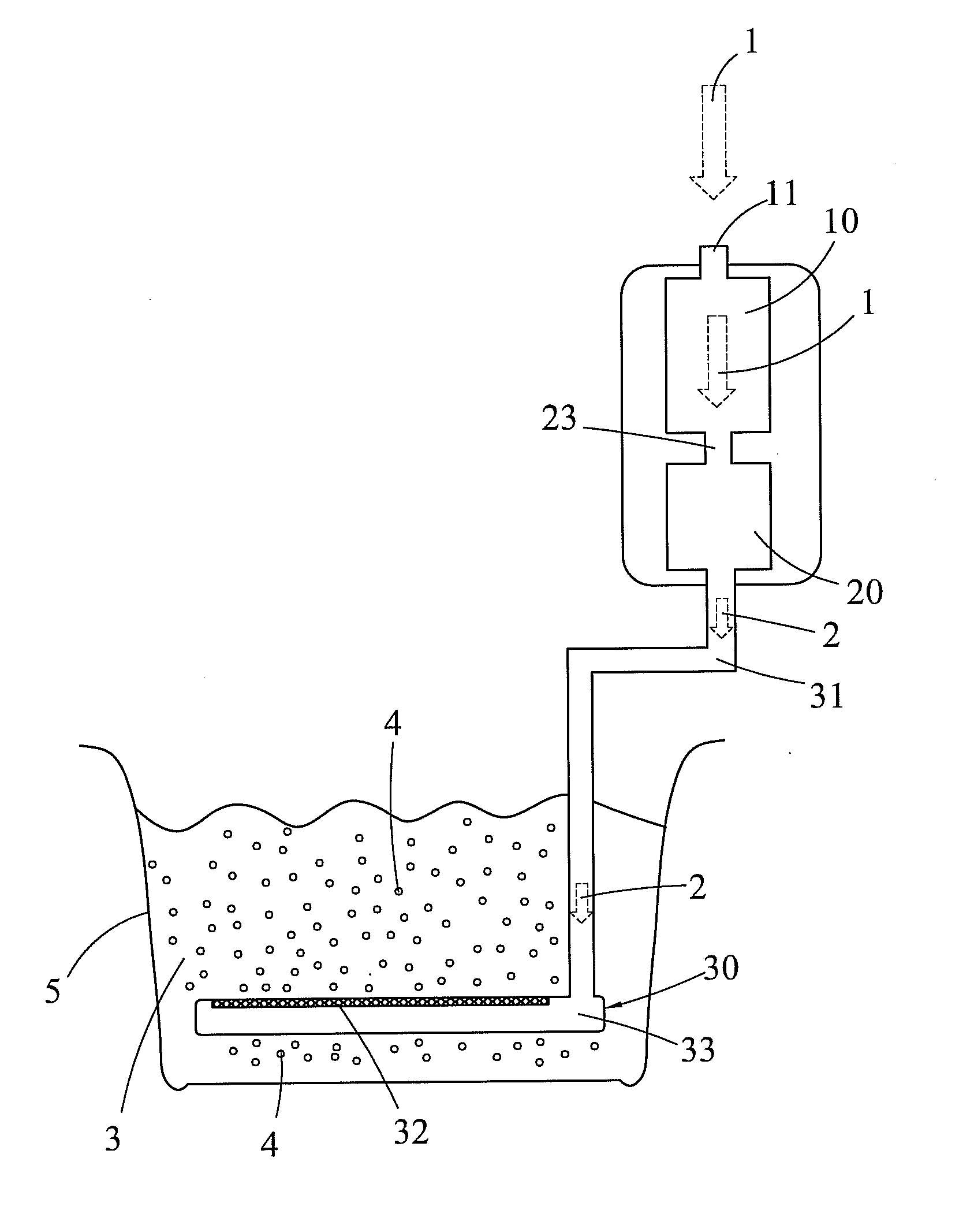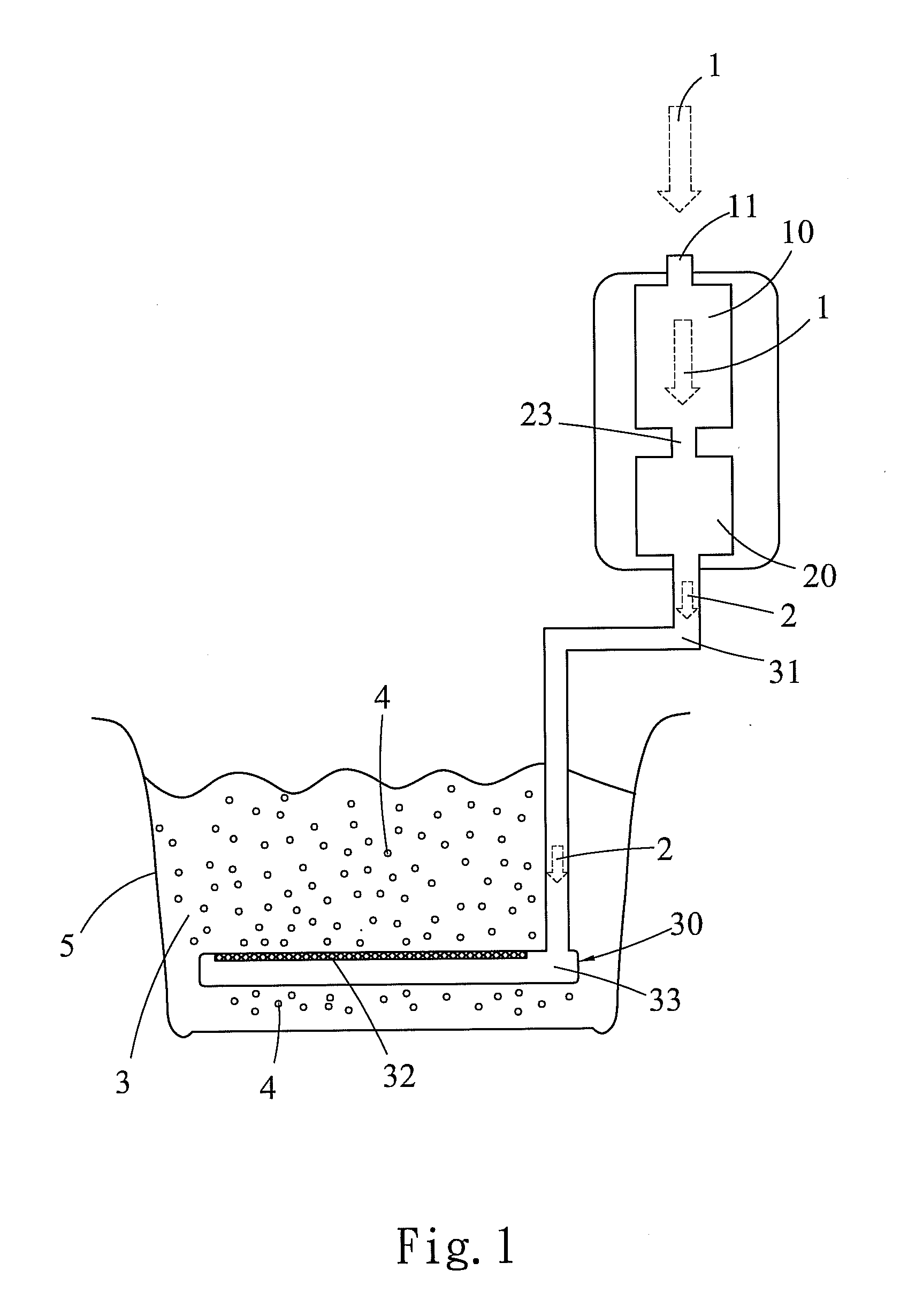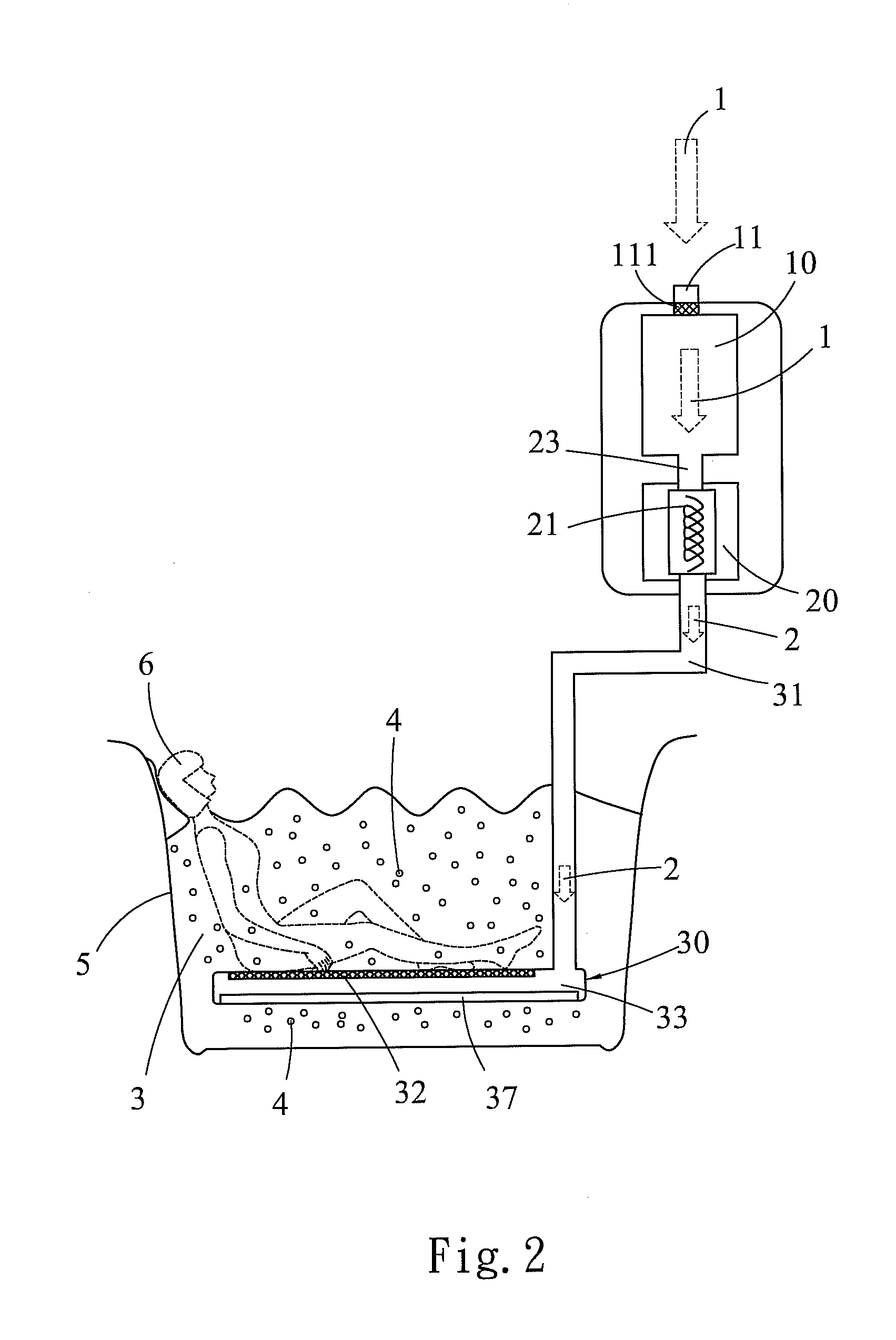Electrically insulated air-conducting water heater
- Summary
- Abstract
- Description
- Claims
- Application Information
AI Technical Summary
Benefits of technology
Problems solved by technology
Method used
Image
Examples
first embodiment
[0020]The air venting unit 30 may further comprise a thermal conductive structure 37 having two opposite surfaces. The thermal conductive structure 37 is made of partially or fully heat conducting materials with two surfaces. One surface is exposed to the air-storage volume 33 to extract heat from the hot air, and the other is exposed to the water 3 in the water pool 5 to release heat to the water. In the first embodiment, the thermal conductive structure 37 is arranged at one side of the air venting unit 30, facing down the bottom of the water pool 5 to avoid a direct contact with a user 6. The thermal conductive structure 37 can be a high thermal-conductivity material such as a metal plate with or without a honeycomb structure, or simply some plastic or rubber with good heat conductivity.
[0021]Refer to FIG. 3, a diagram schematically showing a detailed air venting unit of an electrically insulated air-conducting water heater according to the first embodiment of the present inventi...
second embodiment
[0024]In conclusion, the electrically insulated air-conducting water heater of the present invention adopts non-conducting air as a heat-transfer medium to heat water, so as to avoid potential electric hazard to a hot-water user. The non-conducting air is collected by an air pump, heated electrically in the heating and temperature control unit of the present invention, and injected into water directly as a form of bubbles to heat water. To effectively transfer the stored thermal energy in the hot air to water, injecting micro-bubbles into water from micron-size air nozzles is disclosed as a major advancement and key embodiment of the present invention. the present invention is to firstly transfer part of the thermal energy of the hot air to a thermally conductive material in contact with water and secondly inject the hot air bubbles into water for further water heating. A user of the present invention can adjust the temperature of the air through the heating and temperature control ...
PUM
 Login to View More
Login to View More Abstract
Description
Claims
Application Information
 Login to View More
Login to View More - R&D
- Intellectual Property
- Life Sciences
- Materials
- Tech Scout
- Unparalleled Data Quality
- Higher Quality Content
- 60% Fewer Hallucinations
Browse by: Latest US Patents, China's latest patents, Technical Efficacy Thesaurus, Application Domain, Technology Topic, Popular Technical Reports.
© 2025 PatSnap. All rights reserved.Legal|Privacy policy|Modern Slavery Act Transparency Statement|Sitemap|About US| Contact US: help@patsnap.com



